The insanely popular clean beauty brand, Milk Makeup, has moved to Soho. Flooded with natural light and saturated with artwork that previously exhibited at Milk Studios, the new space is designed by FOOD New York, an agency who has designed spaces for Off-White, Yeezy Studio and MoMA. When you first emerge from the elevators, you are greeted by a large granite lobby complete with electric blue wired chairs, leafy green plants and marble table tops. This lobby resembles an outdoor plaza, as Co-Founder and Chief Brand Officer Mazdack Rassi put it.
“The idea of this plaza – we call it Milk Plaza – is that it looks like an outside park plaza where you can hang out,” Mazdack explains. “Milk Studios was always about the emerging and established next generation coming in and meeting.”
It’s all part of Milk Makeup’s new chapter. As the brand approaches its sixth anniversary, it has much to celebrate. A crisp, clean new look, a brand-new website, a more expansive global audience, and $1.2 billion acquisition with Waldencast, a newly formed beauty and wellness multi-brand platform that also includes internet-beloved skincare brand, Obagi, in its portfolio.
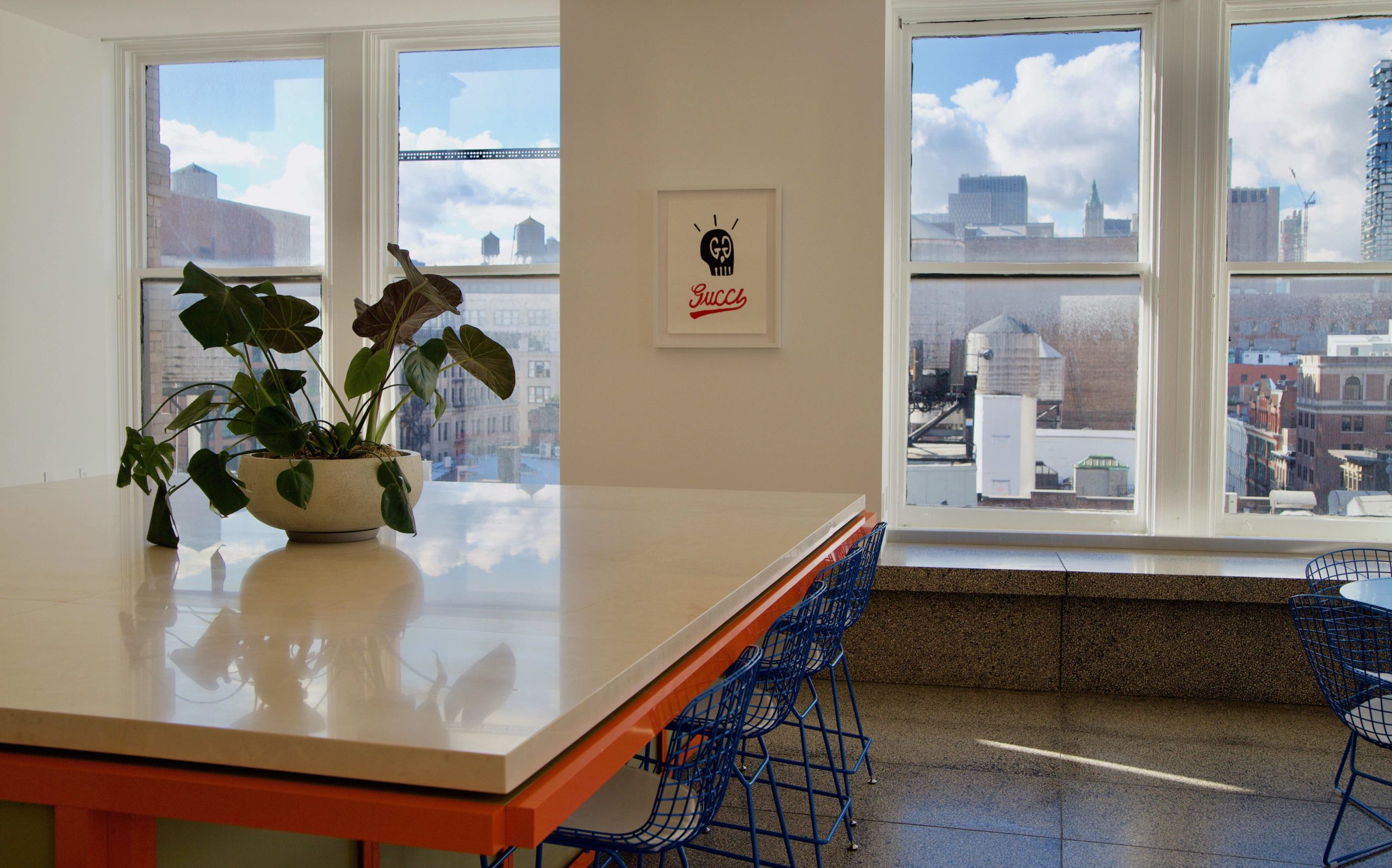
With all its upgrades, Milk is also pushing the boundaries of its core ethos to develop an even deeper focus on clean beauty, sustainability, and inclusivity. “We want to take care of each other by representing different cultures and being true our diverse culture that we represent, but we also want to do our best every step of the way with our products,” says Milk’s Co-Founder and Creative Director, Georgie Greville.
Milk’s “best,” as Georgie mentions here, is a redesign of product packaging to make it more sustainable. Along with shipping their products in 100% post-consumer waste boxes and working with a factory that uses 100% green energy, the brand has also introduced refillable cartridges for some of their best sellers, including their Sunshine Skin Tint SPF 30. These refills reduce plastic waste by 66% and encourage consumers as well as the beauty industry at large, to limit plastic production. Milk is also working toward all formulations being over 80% natural—in addition to ensuring every product is 100% vegan, cruelty-free, and paraben-free.
But it’s not just the emphasis on clean and sustainable that has propelled the company into your favorite celebrities’ beauty cabinets, it’s also their messaging. Since their founding, Milk Makeup has promoted self-expression, telling beauty users (regardless of gender) to “Live Their Look.”
“‘Live Your Look’ for us means living your truth in how you represent and present yourself,” says Georgie. “We always say it’s not how you create your look, it’s what you do in it that matters.”
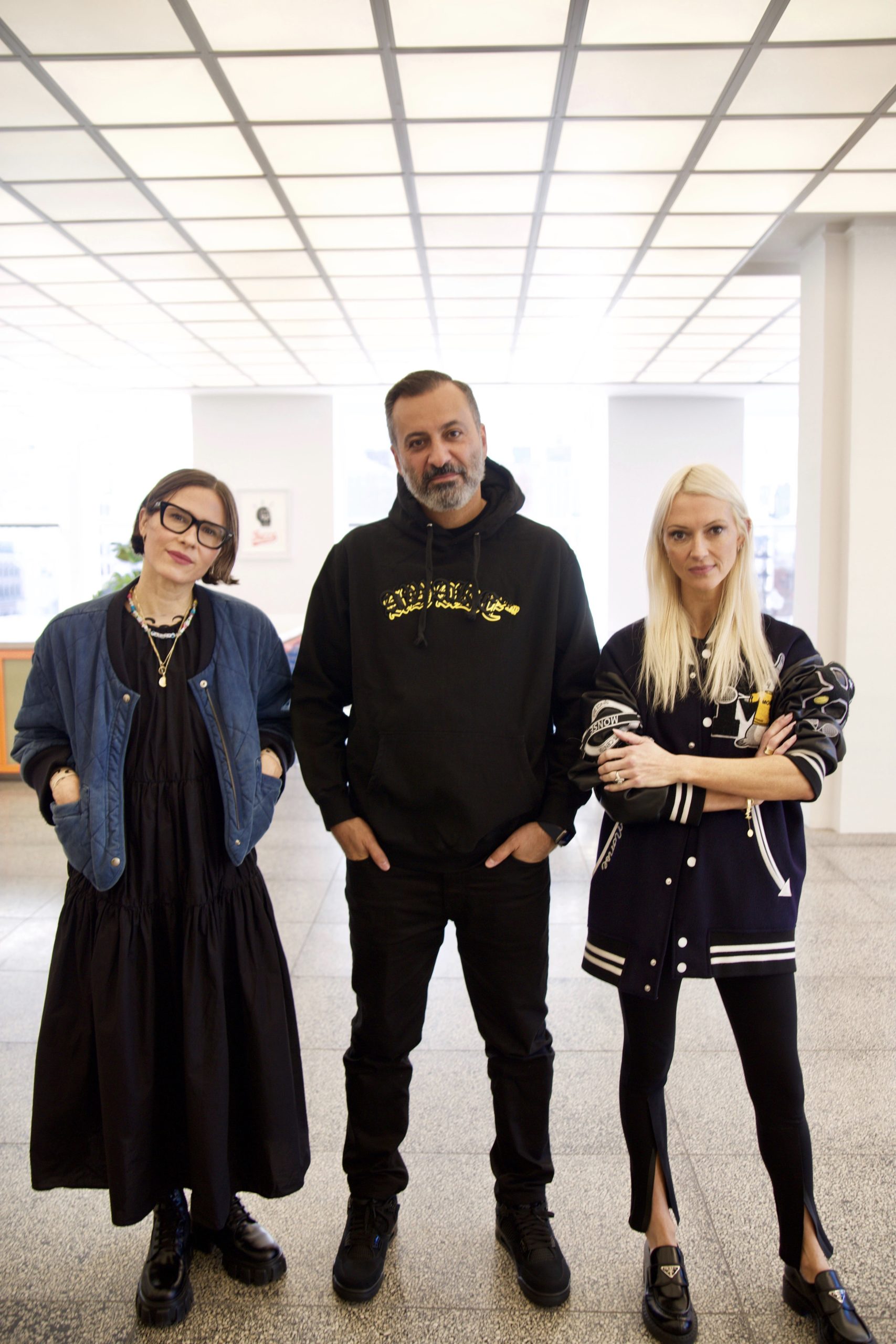
Three of the founders sat down with V to reminisce about their time working out of Milk Studios, the brand’s rising popularity with Gen Z and the future of Milk Makeup. Read the exclusive interview below.
The following interview has been edited for length and clarity.
V: Thanks for chatting with us this afternoon. The first question that I have for you guys is about the origin story. Why did you decide to start a makeup brand and what were the key pillars you built it on?
MAZDACK RASSI: So before there was Milk Makeup, there was Milk Studios. So we come from a long lineage of Milk Studios, which started as a fashion photography studio almost 25 years ago, the studios were always filled with our collaborators, our contributors, our photographers, our filmmakers, our artists, a lot of the people either came there and photographed or they were there working and creating. So that’s kind of how our partnership came together. If you also remember, we [launched] MADE Fashion Week which was really the first real program during New York Fashion Week that supported the next generation of fashion designers, free of charge. Designers could come there – show, produce, create and we had brand partnerships in return. And one of them was our long lasting partnership with MAC Cosmetics. In 2010, we did a collab with MAC – it was called MAC and Milk. [laughs] It sounds like mac and cheese. We did six products with them – it was about backstage essentials. And it came out and then it kind of blew up. At the time I remember all of us looking at each other going, ‘Oh well this is interesting. I wonder if Milk could ever do a line ourselves.’ So I started to think about who at Milk we could kind of, you know, who can we do this with? So finally I was like, Okay, I knew Georgie who helped start one of our companies at Milk, a film production company. And herself being a storyteller and a filmmaker and an incredible creative. Obviously Zanna, my wife, was a beauty editor for almost seven years in London before she switched to fashion. And I was sitting upstairs going well, we can’t do this without them. And then later Dianna joined us as our fourth co-founder. And that’s how Milk Makeup started.
GEORGIE GREVILLE: I came to Milk – and Zanna, actually – as clients, as outsiders. Because I was working for MTV as a writer/director in the promo department, we would both shoot there. And so what Rassi left out a little bit was the culture that he created at Milk by actually, really employing creative people across the board. So there was a culture at Milk – we always talk about the emerging and the established in terms of creatives. That the mix of emerging creatives and established creatives coming together to create new visions, because we both feed into each other. And I think, you know, in this world, we tend to focus a lot on young talent but it’s really the mix that creates that magic and that used to happen at Milk all the time from all sides of the creative industries. So it wasn’t just fashion. But Milk was one of the only places – we always talk about The Factory-like environment where at Milk parties, you didn’t have to be a fashion person to feel accepted there, you just had to have sort of the confidence to walk in the room – or the balls.
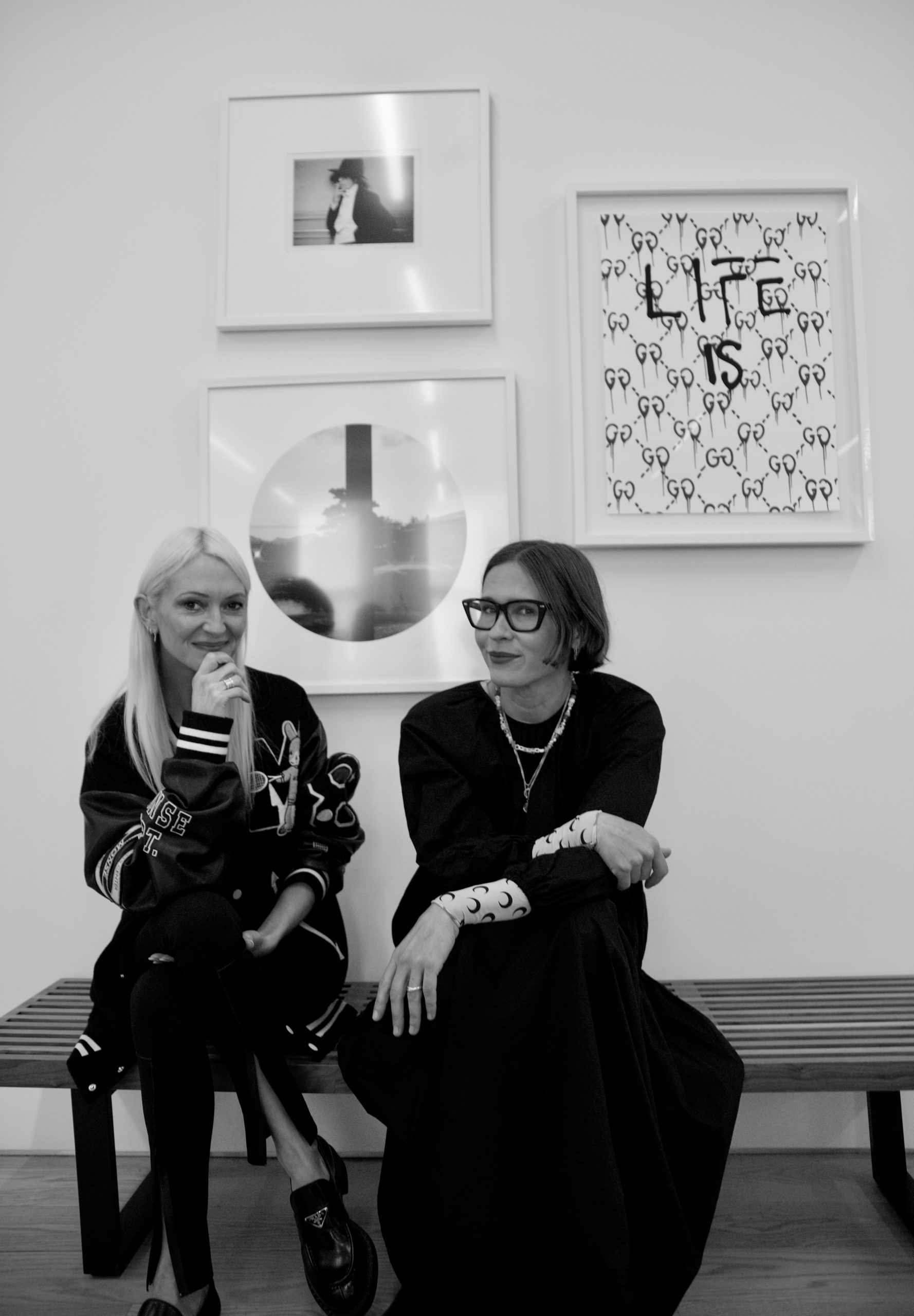
ZANNA ROBERTS RASSI: Milk Makeup was less about recreating the glam or impractical looks we saw on the models inside the (Milk) studios. More about how the behind the scenes crew wore makeup day to day to work in. We would sit in the lobby and watch the photographer, the stylist, the assistant in the equipment room with her inky eyeliner, glassy skin, flushed cheeks. Whatever their look was! Their creativity (and need for utility) was our living breathing Pinterest page.
GG: But it was also how we wore makeup, so we were in the same spirit as well and we knew that as downtown New Yorkers. Those boots you’re wearing are your style, but they’re also walkable and you can go from day to night. That is something that we wanted to put into the products and then Milk itself as a studio. It’s like a vessel for creativity.
V: And then kind of how did you guys end up in this niche of clean beauty with an emphasis now on sustainability?
MR: I think the one thing we knew right off the bat was Milk Makeup wasn’t going to be about the studios or the makeup table or the artistry, but about the people that were there.
ZRR: The behind-the-scenes crew almost.
MR: That community around Milk and knowing that we were a New York City brand, that gave us a lot of inspiration but also held us to a bar. Like we knew right off the bat we had to be cruelty-free.
GG: Yeah, those were givens – talk about the savviness. We do not want to do that work for our customer because we were that savvy. We all had new kids. We all have one-year-old children like across the board – all the founders.
MR: They used to always say like, if we can put it on our kids, like it’s good. Today if someone started a makeup line, especially in New York or LA, the idea [is] that you would be vegan from the beginning, you would be clean. When we started, that was not given. But I think that today, it shows you how the industry has moved. And it’s good for the world to be more sustainable. I think when we started – one of the first meetings with Dianna, our other co-founder, about the product, I remember the first product formulation meeting we had was about what [ingredients] we’re never going to use. So we started with a huge No List and I think that kind of set the tone. The other thing that was really amazing about Dianna was she said “Don’t ever ask me to make products that already exist out there.”
GG: She had 20 years of experience and she’d done a lot of bespoke things for JLo, Bliss Spas, Hello Kitty, Hard Candy – she’s kind of done everything.
MR: To this day she still creates the same way she did day one which is you know, it’s not about market trends or marketing objectives. It is about getting into the kitchen and starting to think of this innovation.
ZRR: “It’s not like we are a bunch of marketers sitting around the table going, “Hmm, what’s trending? What can we sell?” It’s more, “What do WE need?” “Where’s the white space?” And that was the genesis of the brand. It was a contradiction in terms. We were clean but cool. Very very simple to use, but super smart. Its quick to put on, but also lasts all night. The things that traditionally didn’t really exist in one line at the same time.
MR: We mean different things in different parts of the world but the one thing that’s always consistent is our context in New York City. It doesn’t matter if it’s Dubai or Berlin. In Stockholm, the products have this badge of honor that says New York City on it. And it kind of means a little bit different in different places. In Scandinavia, the design and cleanliness does very well. We do very well in skincare.
GG: It’s so interesting how different regions love different products.
MR: In the Middle East, we’re like the Supreme of makeup. Every girl was literally with the Bottega puffy bag and they would pull out the little Lip + Cheek, it was like they were pulling out a little Off-White. So it’s like we definitely have that street culture credibility there but people like men, formulas amaze them.
GG: That’s something we’ve been taught.A lot of people at first glance will read us as a cool brand that’s not really effective or long lasting or truly clean and has really a lot of integrity in the formulations. If you spend time you will see that the formulations are super high integrity. We’re not just doing this to be part of a fad or to sell to an unassuming younger audience. We want a wide range of people from beginners to makeup lovers.
ZRR: 16 to 60.
GG: Yeah, exactly. 16 to 60 to you know, to love it. Because it’s really made for high quality stuff.
V: You guys brought up how Milk has been formed by the city and the people that are in this city and you guys have recently moved to this new space so I have to ask how it has been being in Soho? Do you hope to mold the community like you did in Chelsea?
MR: When I started Milk Studios, I was 24 so I’ve been in Meatpacking my entire life in that building. I was very involved in that neighborhood, every aspect of it from the Whitney coming in, to the Highline. I fought to get the cobblestones back. So that neighborhood is everything. I even helped design the logos and the branding for the neighborhood.
I grew up there from 24 to 50. So it was difficult leaving but I always said to myself like the city is where we come from, not just the neighborhood. And I always knew that if you just go stand outside of Broadway, you will see – I mean this is our crew right? We can just have a little bodega stand on the corner. We’ll probably sell a million mascaras.
ZRR: That’s a good idea.
MR: I walked by the other day and, you know, we just opened the office. And I’m walking down Broadway and I see Tyler the Creator and he’s just sitting on his hood on a really nice car. I see him and he’s looking at me and I go and give him a “Hello, What are you doing?” And he’s like, “I’m just watching the kids.”
What was interesting was like he’s just watching the culture and the city reawakening after COVID and you know the kids kind of took over Soho. I always believed – because I came to New York in 1992 – New York is at its best when it’s rebuilding.
GG: Also I think down the line when it’s safe again, we will use this space to do a lot of in-person, more event stuff that Milk is known for. So stay tuned for that.
MR: This is Dong from Food Design. Dong did a lot of stores for Off-White. They just did the Hypebeast offices, too. But when we first sat with them he was like, “Well you gotta have a piece of Milk in here.” And we’re like, “What does that mean?” And he said, “A place where people can just do meetings, hang out, or skateboard in.” So the idea of this Plaza – we call it Milk Plaza – it looks like an outside park plaza where you can hang out. Milk Studios was always about what Georgie said, the emerging and established generation coming in and working and meeting.
ZRR: I love it because it actually looks like a Milk kiosk in Sephora.
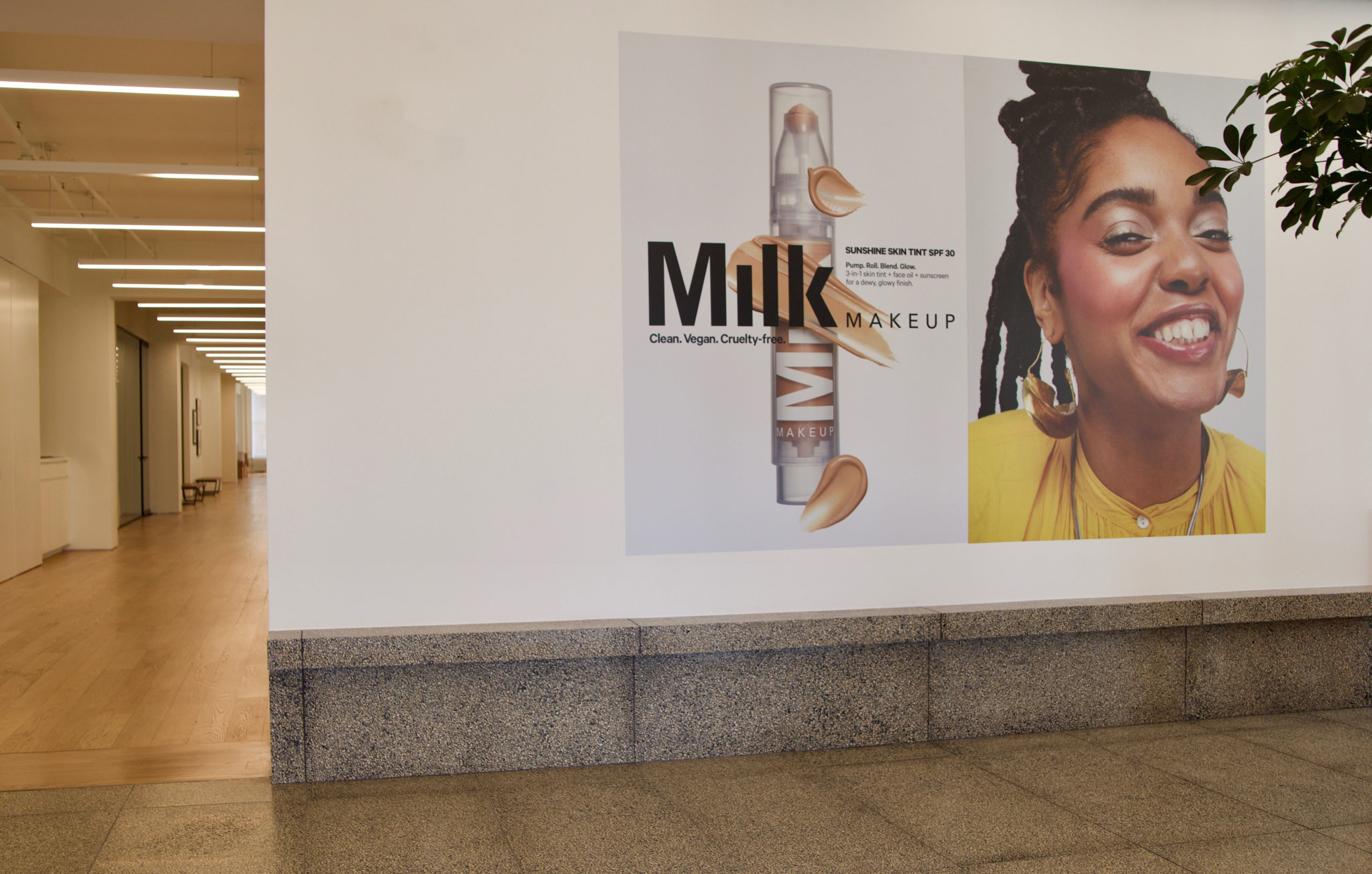
V: And can you briefly talk about what you want to champion with the Milk Makeup phrase: “Live Your Look”?
GG: “Live Your Look” centers around if every decision we make in our lives is potentially like a creative choice, you want to make every creative choice in your own integrity every step of the way. So “Live Your Look” is on one hand saying live your truth in how you represent and present yourself, how you create your look. We always say it’s not how you create your look, it’s what you do in it that matters. So there’s also a lot of other choices that go into your day and if you’re in line with your integrity then you’re kind of in tune with that convergence of what you want and what the world needs and that sweet spot is where it’s at. We want to be as sustainable as possible, we want to be the best versions of ourselves as humans. We want to take care of each other in terms of representation of different cultures and be true to our diverse culture that we represent. We want to be real.
V: And the last question for you is what are the brand’s goals looking into the future?
GG: Representation on our staff and nurturing our own inclusivity, so leading from the inside out. We really do stand by our internal creative team – we do everything in-house and I think that’s a big “Live Your Look” moment for us right now. Are we living our look in products? Yes, more every day. Are we living our look like representing the downtown New York creative community in our own staff? Yeah, we are. Are we doing it as founders? Yes, in all our different ways. It’s like an internal audit.
ZRR: And to me, it’s just like this energy with that very statement. It’s like the idea that whatever you put on your face powers you through whatever you’ve got to do that day. That, in its simplest form, is what we’re looking to do. So it’s inside out, not just outside in.
MR: Milk wasn’t just for beauty, for beauty sake, it was really about that core ethos. And that’s the other thing, it’s not just so much about what Milk Makeup is going to do in the future, I think they’re going to do incredible things. It’s also about what Milk is going to do in the future. And that’s, I think, really exciting because we are really back at kind of ideating around where we go next.
GG: People gravitate toward New York to become themselves because here you have the creative freedom to do that to be exactly who you are, no matter who you are. And that’s why the diversity here thrives so much. We wanted Milk Makeup to be this connector of creativity.
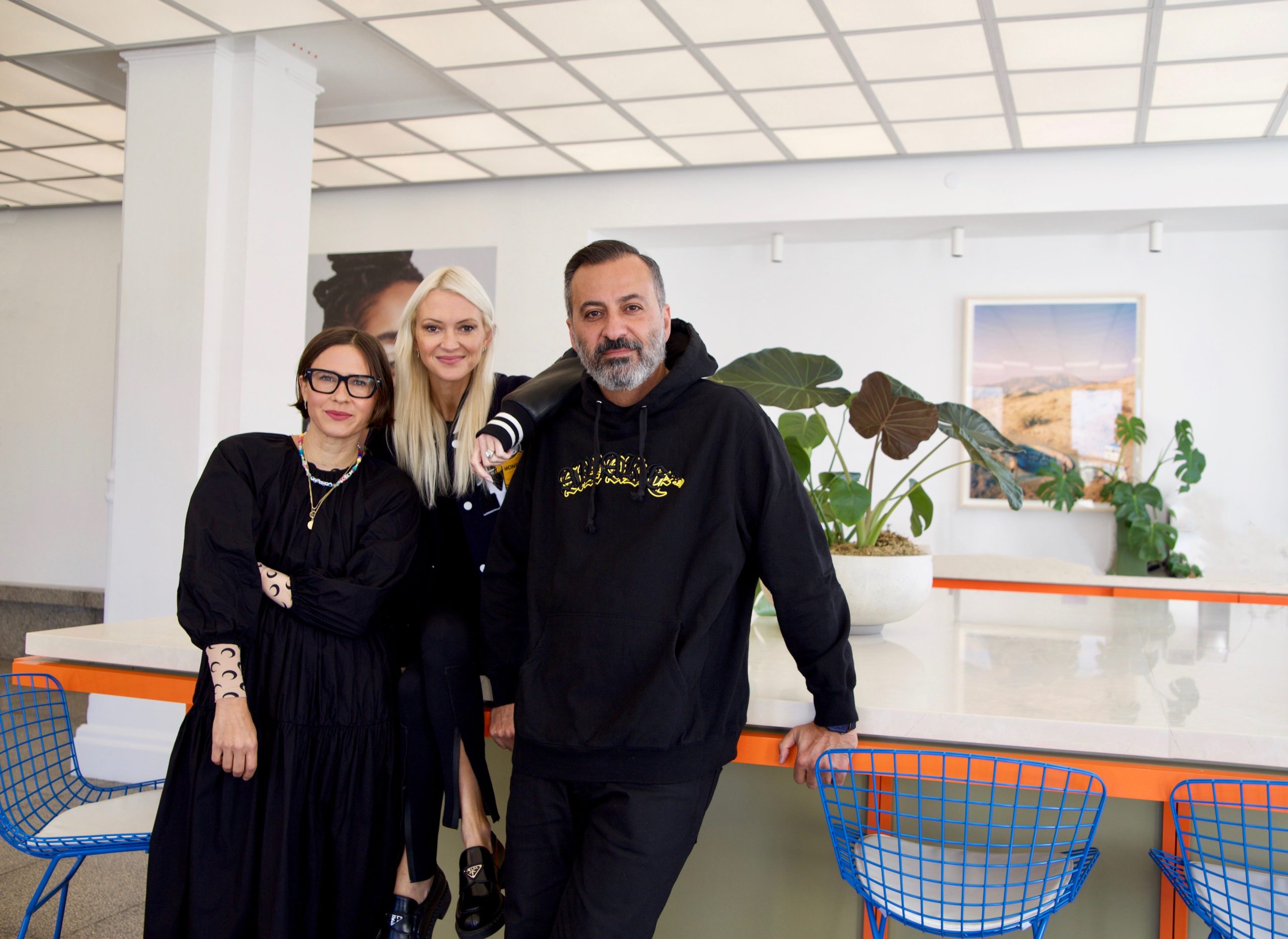
Discover More
